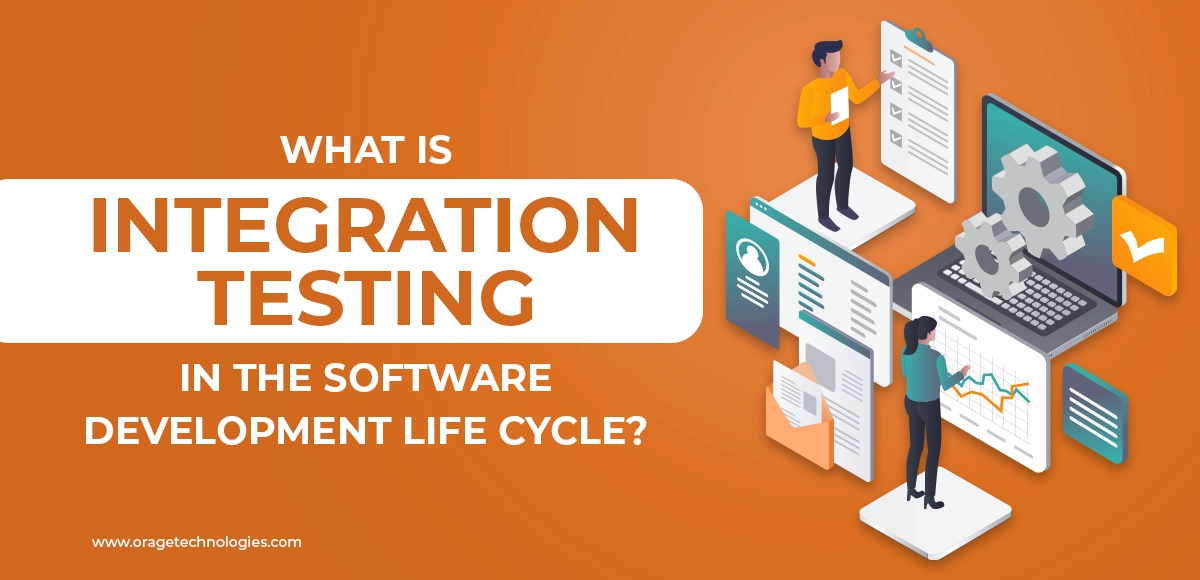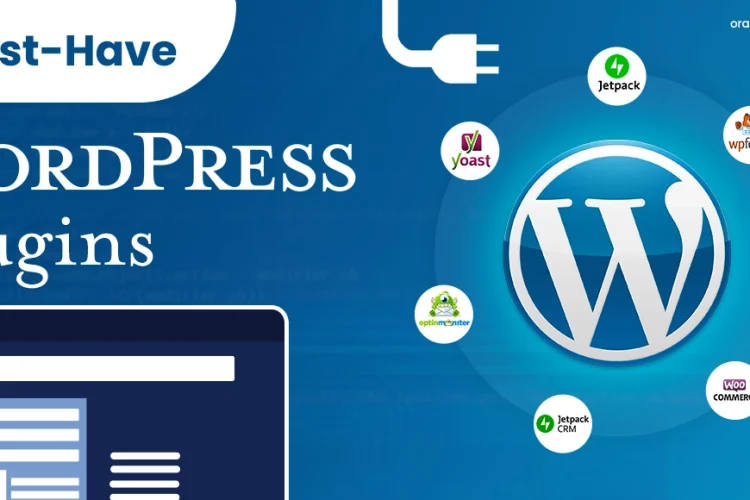
Divya Stuti, with over 5 years of experience in Digital Marketing & Content Writing, has a knack for turning complex Marketing strategies, trends, and jargon...
In software development, ensuring that individual components or modules work seamlessly together is as important as perfecting them in isolation. This is where integration testing, a key phase in the Software Development Life Cycle, comes into play. But what exactly is it, and why is it so important in the software testing process? Let’s dive deeper into this essential testing phase to understand its purpose, methodologies, and benefits.
Understanding Integration Testing
Integration testing is a type of testing where individual units or components of a software application are combined and tested as a group. The main goal of this testing is to identify any discrepancies, defects, or issues that exist between integrated units. By doing so, developers can ensure that the software components interact with each other correctly and as expected.
This phase of testing follows unit testing — where individual components are tested in isolation — and precedes system testing, where the entire system is evaluated. It helps in detecting problems that occur when units are combined, such as issues related to data format, interface mismatches, faulty interactions, and more.
Types of Integration Testing
Integration testing can be conducted in various ways, depending on the approach and strategy chosen by the testing team. Some of the common types include:
Big Bang Integration Testing:
This approach involves integrating all the modules at once and testing the complete system in one go. While it’s straightforward, it can make isolating and identifying specific faults challenging.
Advantages
- Based on a simple approach
- Saves time and effort by combining all the components at once.
Disadvantages
- High risk of bugs and defects
- Difficult to separate bugs and identify it’s source
Incremental Integration Testing:
Unlike the Big Bang approach, incremental testing combines and tests two or more modules step by step. This approach can be further divided into:
1. TopDown Integration Testing:
Testing takes place from top-level units to lower-level units, using stubs (temporary modules) for lower levels that are yet to be developed or tested.
Advantages
- Early testing and detection of highest-level components
Disadvantages
- Needs stubs for lower-level components
- longer testing times
2. BottomUp Integration Testing:
This starts from lower-level units and moves up, using drivers (temporary calling programs) to simulate higher-level units.
Advantages
- A stable foundation for higher-level components
- Lower-level components are simpler to test
Disadvantages
- Bugs in high-level components are difficult to detect
- Challenging to test the interaction of components
3. Sandwich/Hybrid Integration Testing:
This integration testing is an approach that combines both top-down and bottom-up approaches. Hence it has the features of both of them.
Advantages
- Offers a comprehensive view of the system
- Detects bugs before the software development process
Disadvantages
- More complicated to set up
- Time-consuming and requires more resources
Continuous Integration Testing:
In modern Agile and DevOps environments, continuous testing involves regularly integrating and testing code changes, often multiple times a day, to detect and fix integration issues early.
Purpose of Integration Testing
Integration Testing is mainly focused on validating various software components, subsystems, and applications that work in a combined manner to enhance performance.
Integration testing is intended to solve the error that comes up when components are integrated. Some of the common errors that can be resolved using integration testing are performance issues, incorrect communication, and data corruption.
Integration testing is very important for the overall software development life. Some of the main purposes of integration testing are:
- Verify the integration between various components
- Check compatibility
- Early identification of problems
- Enhances overall performance and system reliability
Benefits of Integration Testing
It offers numerous benefits, ensuring the software application functions smoothly as a whole. Here are some key advantages:
- Detects Interface Defects: Helps identify issues related to the interaction between different software modules.
- Ensures Data Flow Accuracy: Verifies the proper data flow between various modules of the software.
- Improves Code Reliability: Finding and fixing bugs early, enhances the reliability of the code.
- Facilitates Early Detection of Issues: Allows early detection of problems, reducing the time and cost associated with fixing them later in the development cycle.
The Importance of Integration Testing in SDLC
Integration testing is important in the Software Development Life Cycle (SDLC), ensuring that different parts of a software system work together seamlessly. This step is vital for several reasons:
1. Verification of Functional Requirements:
Integration testing checks if the software meets its functional requirements by assessing how different components interact. This ensures that the software aligns with the specified initial development criteria.
2. Early Issue Detection:
Integration testing identifies and addresses issues early in development, preventing them from becoming complex and costly challenges later on. Early detection saves time and resources, promoting a smoother development process.
3. Quality Improvement:
By uncovering and resolving compatibility issues, data flow problems, and communication glitches between components, integration testing significantly improves the overall quality and reliability of a software system.
4. Increased Confidence in the System:
Verification of component collaboration brings confidence in the system’s functionality. This assurance is crucial for developers, testers, and stakeholders, ensuring that the software operates as a unified system rather than a collection of independent parts.
5. Different Integration Types, Different Benefits:
Recognizing that different integration types offer distinct benefits in SDLC is essential. Whether it’s top-down, bottom-up, or a combination, each approach addresses specific aspects of the software architecture based on project requirements and complexity.
6. Critical for Delivering HighQuality Software:
Integration testing is not a mere checkbox; it acts as a gatekeeper to deliver high quality, reliable software. It ensures all integrated elements work together harmoniously, contributing collectively to the success of the software application.
Top 9 Tools for Integration Testing
Integration testing ensures the seamless collaboration of various components in a software system. To execute this process efficiently, choosing the right integration testing tools is essential. Here is a list of the top 9 tools for Integration Testing:
1. Citrus
Citrus is a versatile integration testing tool based on Java, offering a seamless testing experience for diverse applications and data formats. Its open-source nature, advanced data and header validation, and compatibility with various protocols such as SOAP, JMS, and HTTP make it a preferred choice for integration testing.
Features:
- Java-based tool is suitable for diverse applications and data formats.
- Supports protocols like SOAP, JMS, and HTTP.
- Facilitates easy to use and opensource integration testing.
- Acts as both client and consumer for message exchange.
- Supports test automation in CI/CD pipelines.
Pros:
- Advanced data and header validation.
- Compatibility with different data formats.
- Versatility in protocol support.
Cons:
- Difficult for beginners.
2. SITA (Smart Integration Test Accelerator)
SITA stands out as a widely used integration testing tool with a business-centric approach, simplifying the complexities of testing through bottom-up approaches. Its features include streamlined process flows, easy test data generation, automation of test design activities, and seamless integration with tools like HP ALM and IBM Rational.
Features:
- Business-centric approach for diverse system testing.
- Simplifies integration testing process flow.
- Enables easy generation of test data.
- Facilitates automation of test design activities.
- Supports integration with tools like HP ALM and IBM Rational.
Pros:
- Time-efficient integration testing.
- Reusable test cases and data.
- Seamless integration with various tools.
Cons:
- Requires initial setup effort.
3. LDRA
Dominating the software testing market for over 40 years, LDRA is a top-notch integration testing tool that ensures the best possible software quality. Known for its TBrun and LDRAunit components, it provides a compact and dynamic solution for integration testing, tailored to specific software requirements, and offers cost-effective solutions for unit testing and overall software functionality.
Features:
- Ensures best software quality compliance.
- Dominating the market for over 40 years.
- TBrun and LDRAunit for high quality software and module interaction.
- Offers tailored solutions for diverse software types.
- Cost-effective integration and unit testing.
Pros:
- Compact and dynamic testing solutions.
- Tailored solutions for specific software requirements.
- Cost-effective integration and unit testing.
Cons:
- May have a steeper learning curve.
4. Rational Integration Tester (Green Hat)
Formerly known as Green Hat and now part of IBM, Rational Integration Tester excels in integration testing for use cases like SOA messaging tests. With features like scripting-free environment creation, reusable stubs, Agile development support, and time-efficient testing processes, it effectively reduces integration issues and bugs.
Features:
- Acquired by IBM in 2012, suitable for SOA messaging tests.
- Reduces integration issues, bugs, and errors.
- Creates scripting-free environments.
- Enables the creation of reusable stubs.
- Supports Agile development and testing.
Pros:
- Scriptingfree environment.
- Reusable stubs for missing software modules.
- Agile development and testing support.
Cons:
- Requires IBM ecosystem integration.
5. Tessy
Tessy is a highly sought-after integration testing tool, particularly for unit testing embedded software. Its Classification Tree Editor (CTE) aids in defining test cases systematically, offering quick analysis of system interfaces and functions, compact support for code coverage, and efficient test execution, analysis, and results.
Features:
- Ideal for unit testing embedded software.
- CTE for defining test cases systematically.
- Analyzes system interfaces and functions.
- Supports test execution, results, and analysis.
- Compact support for code coverage.
Pros:
- Quick analysis of system interfaces.
- Compact analysis and testing functions.
- Code coverage support.
Cons:
- More focused on unit testing.
6. Validata MSG
Validata MSG focuses on automating and enhancing the efficiency of integration testing processes, specifically for SWIFT, SOA, and ATM interfaces. Offering a cutting-edge test automation solution, prebuilt test scenarios, and end-to-end testing capabilities, it streamlines file formatting, data content, and overall testing process flow.
Features:
- Focus on automating integration testing.
- Framework for SWIFT, SOA, ATM, and generic interfaces.
- Test automation solution.
- Prebuilt test scenarios for efficiency.
- Comprehensive file formatting and data content checks.
Pros:
- Efficient test automation solution.
- Prebuilt test scenarios.
- Comprehensive file formatting and data content checks.
Cons:
- May require customization for specific cases.
7. Protractor
Protractor is dedicated to ensuring robust integration testing for Angular and AngularJS applications. As a wrapper around Selenium WebDriver, it provides a managed end-to-end framework, utilizing browser-based drivers, diverse locator strategies, and automated waiting processes to simplify and improve Angular application testing.
Features:
- Dedicated to Angular and AngularJS applications.
- Selenium web driver wrapper.
- Managed endtoend frameworks.
- Utilizes browser-based drivers for user interaction.
- Automated waiting and execution process.
Pros:
- Angularbased features.
- Crossbrowser testing.
- Automated waiting and execution.
Cons:
- Specialized for Angular applications.
8. VectorCAST/C++
VectorCAST/C++ serves as a strong foundation for integration testing, offering complete code coverage utility, automated testing frameworks, and solutions for diverse embedded systems. Its advanced dynamic test solution caters to various software domains, ensuring individual module testing as well as comprehensive testing of combined components.
Features:
- Integrated code coverage utility.
- Automated framework for integration testing.
- Solutions for diverse embedded systems.
- Dynamic test solution.
- Repetitive and consistent process automation.
Pros:
- Comprehensive code coverage.
- Automation for consistent processes.
- Dynamic test solution.
Cons:
- The learning is difficult for the initial setup.
9. VectorCAST/Ada
Integrating seamlessly with tools like IBM Rational and Green Hills, VectorCAST/Ada automates the integration testing process, including driver and stub creation. Its dynamic software testing solutions, integration with various systems and software, and automation for on-target testing processes make it an essential tool for embedded developers and diverse software testing scenarios.
Features:
- Dynamic software testing for integration.
- Integration with various tools.
- Automated process for drivers and stubs.
- Code complexity analysis.
- Integration with multiple systems and software.
Pros:
- Dynamic testing for integration.
- Automated drivers and stubs creation.
- Integration with various systems.
Cons:
- Requires integration effort with other tools.
Challenges of Integration Testing:
While integration testing is an integral part of the Software Development Life Cycle (SDLC), it comes with its set of challenges that demand careful consideration and strategic approaches.
1. Interactions Between Systems:
When dealing with systems from different vendors, questions arise about the impact and interaction of these components. The challenge lies in ensuring seamless collaboration, avoiding conflicts, and guaranteeing that diverse systems work harmoniously.
2. New and Legacy System Integration:
The integration of new systems with existing legacy systems poses a significant challenge. This process demands extensive testing efforts and opens the door to potential system modifications. Bridging the gap between modern and legacy technologies requires a delicate balance to maintain system integrity.
3. Complexity of Components:
Integration testing becomes intricate due to the multitude of components involved—varying platforms, environments, and databases. This diversity adds layers of complexity, requiring thorough testing to validate compatibility and smooth interaction among the different elements.
4. Testing Beyond Integration Links:
Unlike unit testing, integration testing extends its scope beyond link validation. It tests the entire environment, introducing an additional layer of complexity. Understanding how the integrated components function within the broader environment is essential for comprehensive testing.
Best Practices for Effective Integration Testing
To maximize the effectiveness of integration testing, consider the following best practices:
- Plan Ahead: Define clear goals and strategies before starting.
- Start Early: Begin it as soon as the first few modules are developed and unit-tested.
- Use Automated Tools: Implement automated testing tools to streamline the testing process, especially for continuous integration environments.
- Maintain Documentation: Keep detailed records of all tests performed, including the results and any issues found.
- Collaborate: Ensure clear communication and collaboration between developers, testers, and other stakeholders.
Conclusion
Integration testing is a critical phase in the software testing lifecycle that ensures different modules of a software application work together flawlessly. By employing systematic approaches and best practices, teams can identify and rectify integration issues early, leading to a more reliable, efficient, and high-performing software product. In today’s fast-paced development environments, integrating this phase effectively into your testing strategy can significantly contribute to the overall success of your software projects.
Also Read:
- Add Me To Search Guide
- What is Grok AI: A Rebellious AI or Your New AI Friend?
- Microsoft Copilot AI: Features, Versions, and Alternatives
- Server-Based Computing (SBC): A Beginner’s Guide

Divya Stuti, with over 5 years of experience in Digital Marketing & Content Writing, has a knack for turning complex Marketing strategies, trends, and jargon into interesting and easy to digest blog posts. Whether she’s breaking down the SEO, Social Media or decoding campaigns, Divya knows how to make marketing feel exciting and easy to understand. Armed with a sharp eye for strategy and a storyteller’s instinct, she writes with clarity, creativity, and just the right dose of wit.
More Posts

